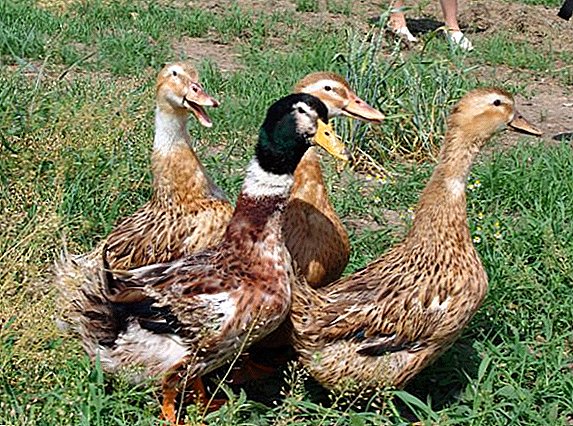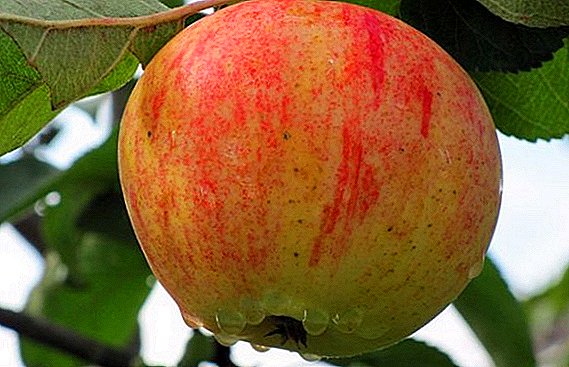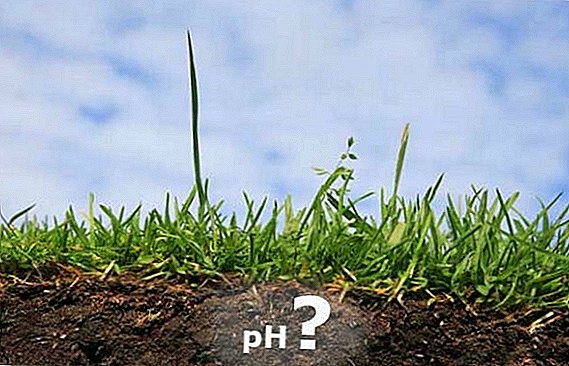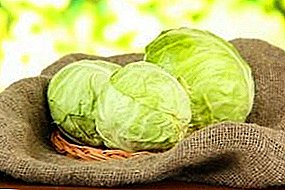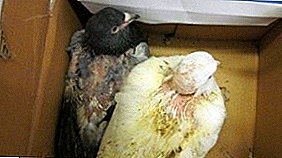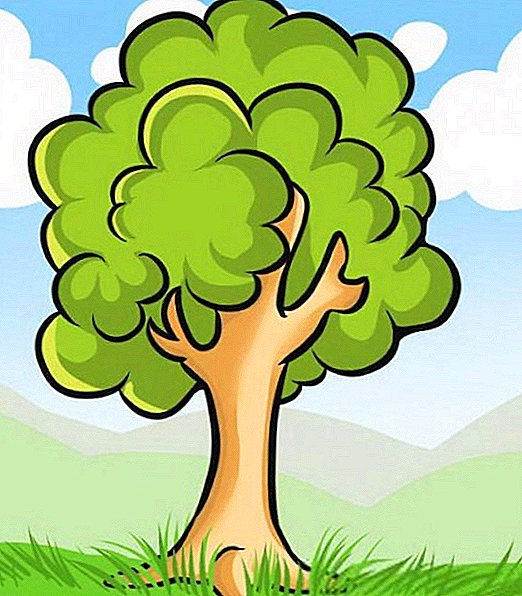 Thuja western "Brabant" is one of the western thuja varieties, which is distinguished by its rapid growth, its height reaches 20 m, and its crown diameter is 4 m. By the growth rate of thuja Brabant is second only to larch, but, unlike it, does not shed leaves for the winter. The crown of a thuja is compact, branchy, it can sink to the ground, and the bark has a red-brown shade, often exfoliates.
Thuja western "Brabant" is one of the western thuja varieties, which is distinguished by its rapid growth, its height reaches 20 m, and its crown diameter is 4 m. By the growth rate of thuja Brabant is second only to larch, but, unlike it, does not shed leaves for the winter. The crown of a thuja is compact, branchy, it can sink to the ground, and the bark has a red-brown shade, often exfoliates.
The needles of thuja "Brabant" are green, sometimes with golden tips. She retains her colors even in winter. This is a rare property for such plants; they usually turn yellow with the onset of cold weather.
The most interesting and useful about TUI "Brabant" consider below.
Characteristics and features of thuja "Brabant"
Thuja "Brabant" from the cypress family is considered a "giant" among its relatives. It also features a lush crown. The needles themselves resemble scales up to 0.4 cm in size, growing vertically. They are tightly pressed to escape.
Once every 2-3 years, the needles fall along with the twigs. Cones of thuja "Brabant" small, up to 12 mm, are egg-shaped. They consist of thin plates with two flattened seeds. Seeds - yellow with two wings.
 During the year, western thuja grows up to 30 cm in height and up to 10 cm in width. It has a sound wood, quite strong, without resin ducts, with a delicate aroma, not subject to putrefactive processes. The root system of the thuja "Brabant" is very compact.
During the year, western thuja grows up to 30 cm in height and up to 10 cm in width. It has a sound wood, quite strong, without resin ducts, with a delicate aroma, not subject to putrefactive processes. The root system of the thuja "Brabant" is very compact.
This variety loves the sun, but can easily grow in the shade. It feels good near groundwater and in highly humid areas. And adult individuals with a perfectly formed root system tolerate drought and frost normally. Thuja "Brabant" easily takes root in urban environments. The original form of the crown has led to the use of western thuja in landscape design, among single and group plantings.
Did you know? Thuja is widely used in medicine. All parts of the plant are used for different preparations: needles, bark, branches, cones, pollen.
How to choose healthy seedlings when buying
Thuja saplings "Brabant" is best to buy already acclimatized. Each plant should be in a separate container with fertilizers. Thanks to this approach, seedlings do not need to dig, damaging the root system. After landing in the ground, they will take root.  It is better to acquire thuja seedlings at the end of May or in June, at which time you will not be able to give the dead plant instance to a living one.
It is better to acquire thuja seedlings at the end of May or in June, at which time you will not be able to give the dead plant instance to a living one.
How to plant thuja "Brabant"
In order to enjoy the green magic and the fabulous aroma of thuja “Barbant” for as long as possible, you should follow all the rules of planting seedlings. This is the key to healthy growth and long life of the plant.
Best time to land
Thuja can be planted from spring to autumn inclusive, and seedlings best take root in April - May. In these months it is worth using cheap seedlings. Then, throughout the summer, you can do container seedlings. Most likely, all your plants will take root. But it is better to feel, to hurt less and to grow more actively spring specimens.
The choice of location and soil for planting
The ideal soil for Tui is moist and light. If you plant the plant in dry and clayey soil, it is likely to dry and turn yellow. Thuja does not like shade and wind, but you shouldn’t leave it alone with the scorching sun either. The best option would be a place protected from the wind with enough light and shade.
Soil preparation before planting
Before planting, dig pits measuring 60 × 60 × 80 cm. If the soil is damp and heavy, drainage should be made of small stones, broken bricks, large pebbles or crushed stone with a layer of 20-30 cm.  Nutritional mixture for thuja consists of soil, sand and peat (1: 2: 2). If you plant a plant in spring or early summer, pour 200 g of complex fertilizers into each hole. If you plant in late summer or autumn, add 250 g of superphosphate.
Nutritional mixture for thuja consists of soil, sand and peat (1: 2: 2). If you plant a plant in spring or early summer, pour 200 g of complex fertilizers into each hole. If you plant in late summer or autumn, add 250 g of superphosphate.
Planting rules seedlings
It is very important to observe the distance between the thuja during planting. They distribute seedlings of thuja "Brabant" at a distance of 0.5 to 3 m. The optimum depth of landing is from 60 to 80 cm. Drainage - 15 - 20 cm.
Directly to the landing, you can proceed after the preparatory work. Place the root system of thuja "Brabant" on the nutrient mixture in such a way that the neck of the seedling is at ground level. Pour the roots with the mixture and lightly tamp.  These are general rules for the western Brabant thuja. But if you decide to plant a thuja "Brabant" in the fall, then you should know some of the features for this time of year.
These are general rules for the western Brabant thuja. But if you decide to plant a thuja "Brabant" in the fall, then you should know some of the features for this time of year.
- You need to meet the deadlines: seedlings with open roots "inter predict" from early September to early October, and grown in a container - until the end of October.
- When planting in the fall do not apply any dressing, except those that stimulate the growth of roots.
- It is advisable to use mulch to insulate the roots.
- It is necessary to protect the crown of a young plant from the scorching sun and frost.
How to care for thuja "Brabant" in the process of growing
Care and cultivation of Tui - not the easiest task for the gardener. In order for the plant to be beautiful and healthy, it is necessary to follow the rules of caring for it in the process of growth: fertilizing, mulching, proper watering, fertilization, pruning and cutting.
Watering, loosening and soil mulching
 After planting, pour plenty of water on each seedling. Then mulch the tree trunk circle of each tree with a layer of 10 cm. Mulch helps to keep moisture in the soil longer, does not allow it to overheat, does not allow weeds to grow, and when decomposed it supplies the root system with nutrients. In winter, the mulch protects the roots of thuja from freezing and does not allow the soil to thicken.
After planting, pour plenty of water on each seedling. Then mulch the tree trunk circle of each tree with a layer of 10 cm. Mulch helps to keep moisture in the soil longer, does not allow it to overheat, does not allow weeds to grow, and when decomposed it supplies the root system with nutrients. In winter, the mulch protects the roots of thuja from freezing and does not allow the soil to thicken.
Peat, bark of coniferous plants, leaf humus and compost are suitable for mulch. In the first month after planting, it is necessary to water plentifully with thuja every day, since young shoots wither from the lack of moisture, and the crown thins.
Important! Tui roots should not dry out and be very moist.Also, thuja needs regular soil loosening at a depth of 10-15 cm.
Fertilization
Fertilizer for thuja "Brabant" is not much different from feeding for other varieties of this plant.
If the thuja is planted in spring or early summer, then in September you need to think about feeding plants phosphorus-potassium fertilizers. In the following years, thuja is fed in the early spring with a dry fertilizer “Kemira Universal” or a hydro complex. The procedure is repeated in two weeks. In the autumn, the plant should be fertilized with phosphorus-potassium mixtures.
Trimming and haircut
If there is a need, then spring gardeners do sanitary pruning of thuja, removing diseased and damaged branches. The most effective haircut thuja "Brabant" will be in June. Remove no more than 1/3 of the length of the shoot.
Did you know? To create a hedge of thuja, it is often used that the Brabant variety. It is popular for its unpretentiousness and good portability haircuts.
Hedge and use in landscape design
Beginning gardeners often wonder: how fast is thuja Brabant growing and is it suitable for hedges? This sort of Tui grows much faster than others, it is resistant to urban conditions, so it is often used in landscape design and the creation of living walls. Thuja "Brabant" is wonderfully combined with cypress, eastern spruce, hemlock, European larch, globular and open junipers, globular and ovoid pines, microbiota, delicate larches and many other plants, allowing you to create interesting compositions.  In landscape design there are two types of hedges: free-growing and short-haired. For Tui "Brabant", a shorn form is best suited. If you are interested in the question: how to trim a thuja for a hedge, then it is best to do it twice a year - in March and August. By interlacing the branches, the plants will create a dense wall.
In landscape design there are two types of hedges: free-growing and short-haired. For Tui "Brabant", a shorn form is best suited. If you are interested in the question: how to trim a thuja for a hedge, then it is best to do it twice a year - in March and August. By interlacing the branches, the plants will create a dense wall.
How to deal with pests and diseases
Thuja western "Brabant", like all plants, has a list of their diseases.
Fungus. It can be diagnosed when brown shoots appear on the tree. If you notice such branches, they need to be removed so that the fungus does not spread to the healthy parts of the plant.
Important! Burn the shoots removed by the fungus so that it does not move to other plants.For the subsequent treatment of thuja, use the drug "Fundazol" 0.2%. Spray the plant once every two weeks until mid-autumn. For the prevention of fungus, add limestone to the roots of the tree.
 Dummy. It is diagnosed when yellow spots appear on the trunk of the tree. If the plant is not treated in time, the spots will grow and the thuja will die. Use drugs "Karbofos" or "Rogor".
Dummy. It is diagnosed when yellow spots appear on the trunk of the tree. If the plant is not treated in time, the spots will grow and the thuja will die. Use drugs "Karbofos" or "Rogor".
If the plant begins to turn yellow for no apparent reason - it may be a fungus of the roots. "Fundazol" will help you to cope with this problem. No less dangerous for Tui two pests.
Thuja moth. Tiny butterflies begin to fly in early May. To diagnose thuja damage by this pest is quite simple: the leaves turn brown and the tip dries out. To prevent the appearance of moths will help processing wood "Cypermetrin."
Tuevaya aphid - very dangerous pest. Dark brown bugs live on the bottom of the shoots. To destroy the pest, use "Malathion".
Wintering thuja "Brabant"
To prepare the plant for winter, it is necessary to tie the crown with twine, this will protect it from wind and snow. Young trees should be covered with protective material. Lap branches, white non-woven synthetic material or kraft paper are suitable for this purpose.


